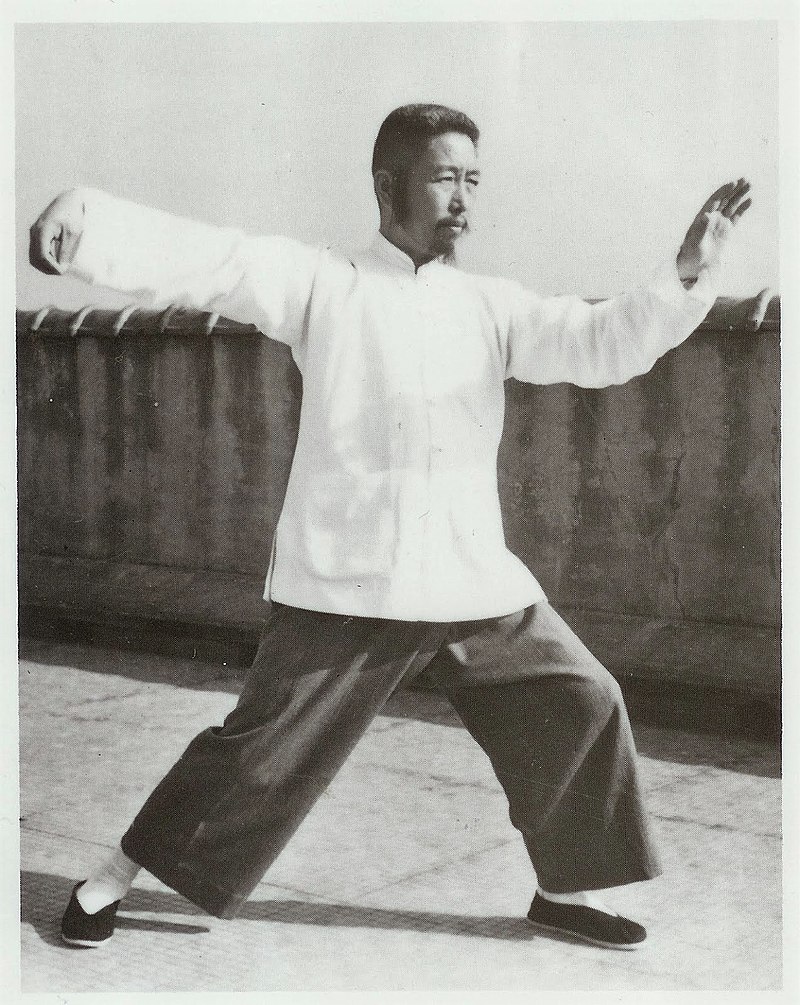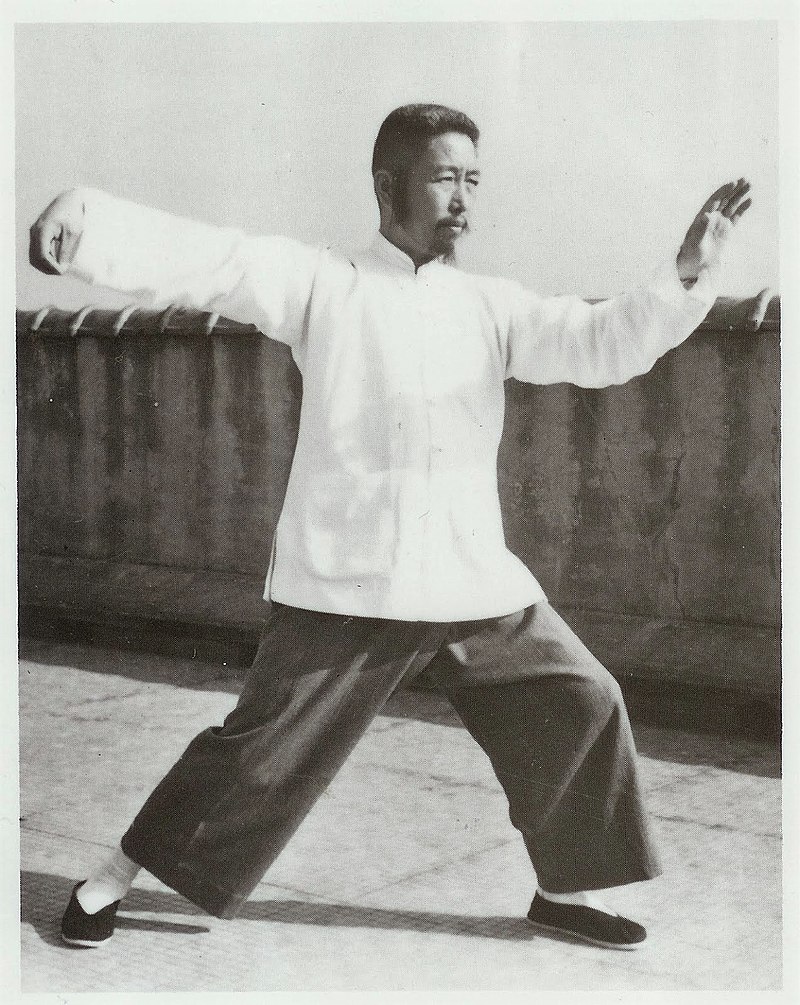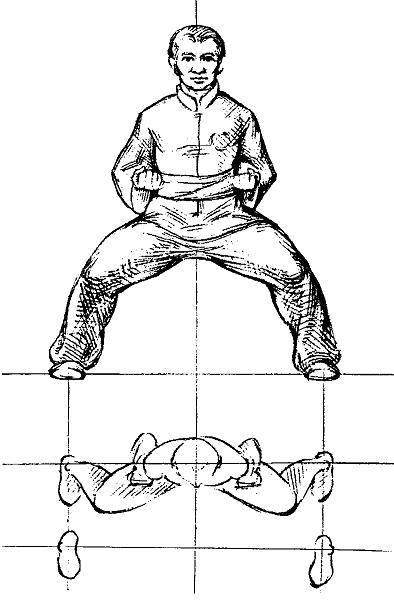

Chen Man Ching once famously said that he only understood Tai Chi after having a dream in which he had no arms.
It’s a good indication of what you’re looking for in Tai Chi – which is to “do” everything with the actions of the legs and waist, not the arms. The idea of moving the arms without moving the arms is, of course, contradictory, but that’s the challenge you undertake when you practice Tai Chi.
I found that I didn’t “get” this concept of “no arms” until I really relaxed my lower back and learned to sit correctly in the form. The lower back is the bridge between the upper body and the lower body. If that bridge is not open then goods and services cannot flow between the two different countries.
So, how do we do this in the correct way? I think the key is to be found in how you get into a riding horse posture properly.

We’re all familiar with the wide-legged riding horse posture. When you start a Tai Chi form you are essentially sitting down into a narrower version of it, but it’s the same kind of stance.
Let’s formalise what I mean by Riding Horse stance a bit more.
1. Toes point forward.
2. Knees bent, but not further forward than the toes.
3. Feet two shoulder widths apart.
As aways we make sure that our upper body is relaxed (not collapsed) and upright. Just take a moment to focus not he AO joint that I mentioned in my last post, to ensure that your head is in the correct position. Your neck should feel long at the back and the chin slightly tucked at the front, crown going in the upward direction.
Now straighten your legs. This brings you out of a riding horse stance and into a leg triangle stance with straight legs.
We’re going to lower back down into a riding horse, but rather than doing what you normally do, I want you to focus on two things.
1. The knees go forward as they bend.
2. The butt does not move backward as it would if you were going to sit in a chair, but instead you open/relax your lower back so that it sinks downward.
There you go. This should feel like a different sort of riding horse stance to what you’ve normally experienced. That elongated and open feeling in the lower back is what you need to maintain during your Tai Chi form. Without that feeling you cannot connect the upper and lower parts of the body.
Play with it, experiment with it a bit, and then when you’re ready, start your Tai Chi form and as the hands come down and you sink, try and achieve the same feeling.
Then try and keep it for the whole form. If you can do that, then you’ll start to notice that Tai Chi is all about the leg movements, not the arm movements. Your arm movements can start to be directed by the leg and waist movements.
As it says in the classics:
It is “rooted in the feet,
generated from the legs,
controlled by the waist, and
expressed through the fingers. “






